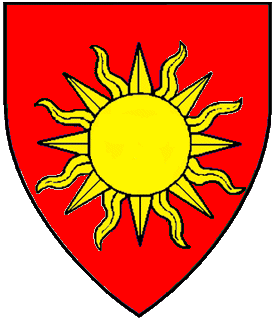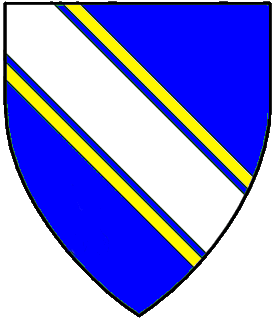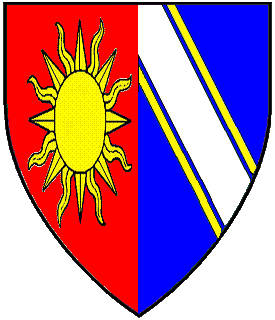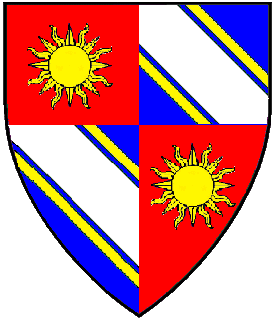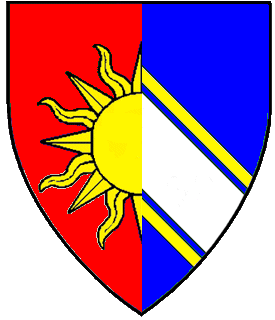






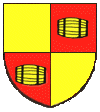



RfS XI.3].
RfS XI.3].
RfS XI.3. Marshalling. - Armory that appears to marshall independent arms is considered presumptuous.
Period marshalling combined two or more separate designs to indicate descent from noble parents and claim to inheritance. Since members of the Society are all required to earn their status on their own merits, apparent claims to inherited status are presumptuous. Divisions commonly used for marshalling, such as quarterly or per pale, may only be used in contexts that ensure marshalling is not suggested.
a. Such fields may be used with identical charges over the entire field, or with complex lines of partition or charges overall that were not used for marshalling in period heraldry.
b. Such fields may only be used when no single portion of the field may appear to be an independent piece of armory.
No section of the field may contain an ordinary that terminates at the edge of that section, or more than one charge unless those charges are part of a group over the whole field. Charged sections must all contain charges of the same type to avoid the appearance of being different from each other.
